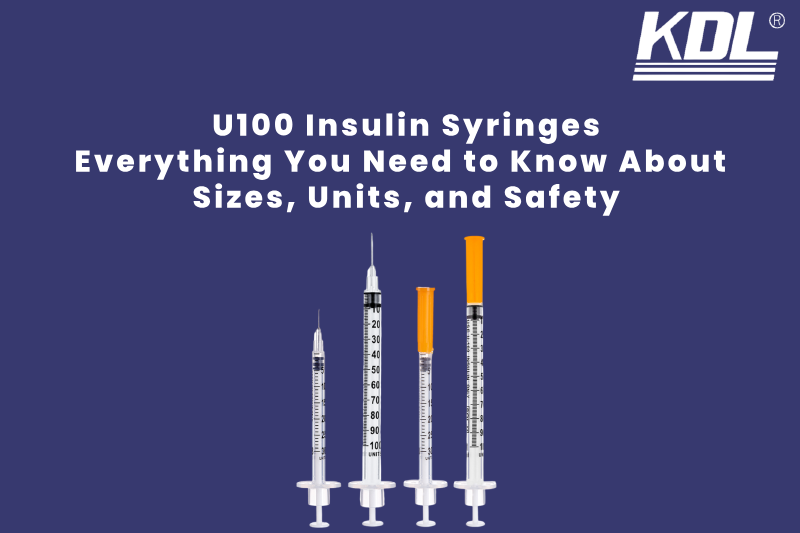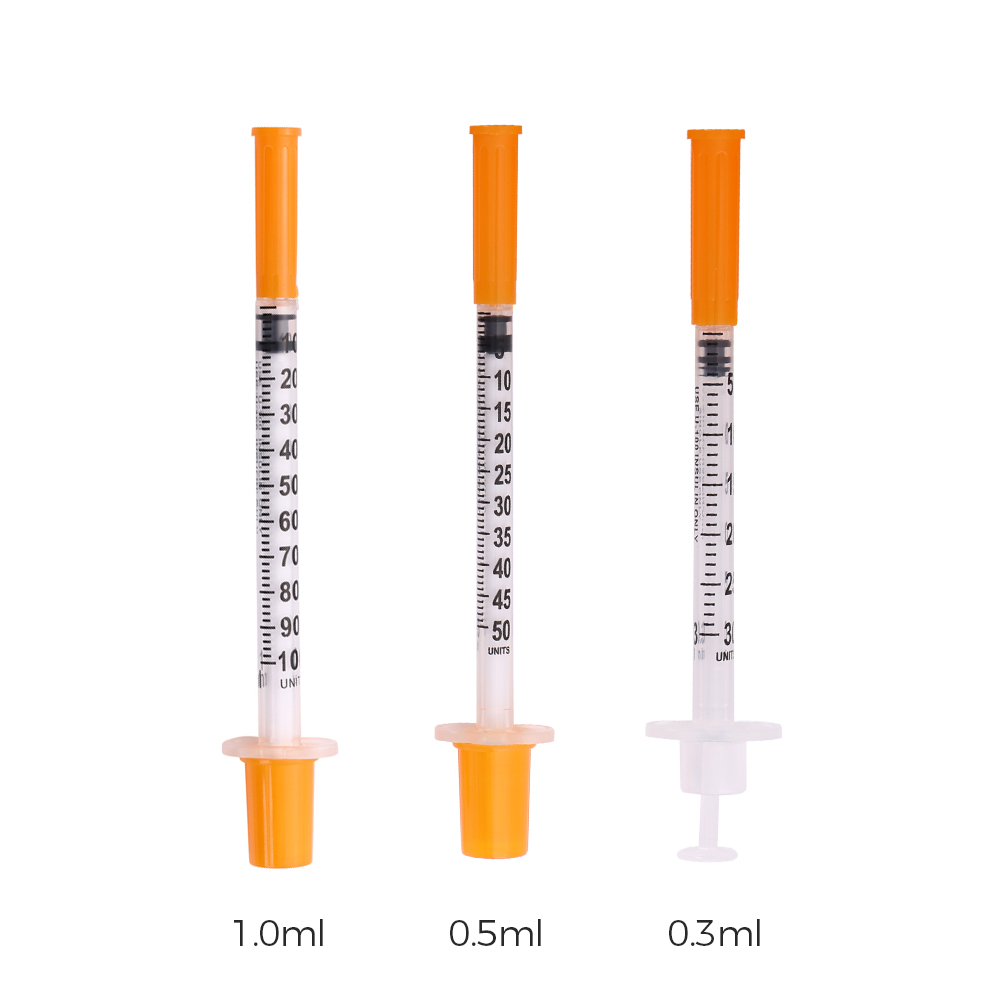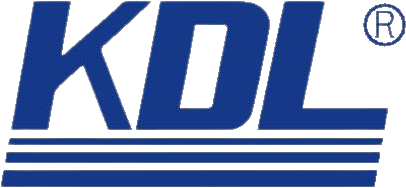
Living with diabetes means paying attention to the smallest details from what you eat to how you measure your insulin. If you use insulin injections, understanding your syringe is just as important as knowing your dosage. One of the most common types you’ll hear about is the U100 insulin syringes. But what does “U100” actually mean?. How do you know which syringe size or needle length is right for you?
We’ll explain in clear, simple language everything you need to know about U100 insulin syringes, such as their sizes, units, and safety tips.
What Does “U100” Mean in Insulin Syringes?
The “U” in U100 insulin stands for units, and the 100 means that there are 100 units of insulin in every mL of liquid.
So, an U100 insulin syringe is made just for U100 insulin. It’s marked with “units,” which makes it easy to get the right amount without having to do any math.
For example:
- 1 mL of U100 insulin = 100 units
- 0.5 mL of U100 insulin = 50 units
- 0.3 mL of U100 insulin = 30 units
It’s easy to get the right amount, whether you’re taking 10 or 50 units.
Important: Dosing mistakes can be very bad if you use the wrong type of needle, like a U40 syringe with U100 insulin. Ensure that the insulin dose and needle always match.
Why U100 Syringes Are the Standard Today
In most countries, U100 insulin is the standard strength used for both human and analog insulin types. Years ago, different insulin concentrations were common — like U20, U40, or U80 — but they often led to confusion and dosing errors.
Switching to U100 insulin made things safer and easier for people with diabetes and healthcare providers. Most insulin needles you will find today are made to work with U100 insulin.
That’s why you’ll often see “U-100” printed clearly on both the insulin vial and the syringe package.
Understanding Parts of a U100 Insulin Syringe
Let’s look at the basic parts of an U100 insulin syringe before learning about sizes:
Needle: The thin, sharp metal tip that goes through your skin.
Barrel: The clear tube that holds the insulin and is marked with unit marks.
Plunger: Pressing or pulling on the plunger lets you draw or inject insulin.
Hub: The hub is the small piece of plastic that holds the needle to the barrel.
Each part is necessary to help you accurately measure and give the right amount in a safe and comfortable way.
Read Also : How to Choose the Right Insulin Syringes for Your Needs
U100 Insulin Syringe Sizes: 0.3 mL, 0.5 mL, and 1 mL
There are three main sizes of U100 insulin syringes: 0.3 mL, 0.5 mL, and 1 mL. The most pieces that each size can hold is different. How much insulin you normally take will help you choose the right size.

0.3 mL syringe (30 units)
- The best amount is less than 30 units of insulin.
- This is often used by kids or people who only need a small amount.
- It’s marked more precisely, every 1 unit or even every half-unit on some types.
These are great for when you need to be very precise or take small amounts, like when you need to change your insulin for meals or snacks.
0.5 mL Syringe (50 units)
- It can hold up to 50 units of insulin.
- Good for moderate doses.
- Marked in single-unit increments.
This size is common among adults who take medium-range insulin doses each day.
1 mL Syringe (100 units)
- Holds up to 100 units of insulin.
- Used by patients who need to take more medicine at once.
- Could have markers for 2 units to make it simpler to read.
If you use higher doses, this syringe prevents you from having to fill multiple times.
Tip: Always choose a syringe size that matches or slightly exceeds your usual dose. That way, you can measure comfortably without overfilling.
Understanding the Length and Gauge of Needles
Another important thing to look for in a syringe is the tip. Needles are not all the same length and size (thickness). Both change how the insulin is put into your skin.
Needle Lengths
Common lengths for U100 insulin syringes include:
- 4 mm (shortest)
- 6 mm
- 8 mm
- 12.7 mm (longest)
Shorter needles are becoming more popular because they cause less pain and are easier to use. Most people can inject effectively into the fatty layer under the skin with a 4 mm or 6 mm needle — no need to reach the muscle.
Needle Gauge (Thickness)
Gauge numbers range from 28G to 31G:
- Higher gauge = thinner needle.
- Thinner needles (like 31G) cause less discomfort.
For example, a 31G, 6 mm needle is one of the most comfy choices for getting doses every day.
Pro tip: Ask your doctor or nurse what needle length and size will work best for your body and where you want to insert it.
How to Read Units on a U100 Insulin Syringe
Each U100 syringe is clearly marked with unit lines to help you measure your dose. But since there are different syringe sizes, it helps to know what those lines mean.
Here’s a quick guide:
| Syringe Size | Max Units | Typical Markings |
|---|---|---|
| 0.3 mL | 30 units | 1-unit or 0.5-unit marks |
| 0.5 mL | 50 units | 1-unit marks |
| 1 mL | 100 units | 2-unit marks |
To draw up insulin:
- Pull the plunger back to the number of units you need.
- Insert the needle into the vial and push air in (equal to your dose).
- Turn the vial upside down and draw insulin to your dose line.
- Double-check that the insulin level lines up exactly with your dose marking.
Always make sure there are no air bubbles before injecting.
U100 vs. U40 Syringes: What’s the Difference?
People come across both U40 and U100 syringes from time to time, especially when they are shopping online or taking care of insulin for their pets. The difference is in how much insulin is present.
- U100 insulin: 100 units per mL
- U40 insulin: 40 units per mL
That means if you used a U40 syringe with U100 insulin, your dose would be off by 2.5 times — which could be dangerous.
Rule of thumb:
- Use U100 syringes only with U100 insulin.
- Use U40 syringes only with U40 insulin (usually for veterinary use).
Double-check both your syringe and insulin label before every injection.
Tips for Using U100 Insulin Syringes Safely
Insulin needles are made to be easy to use and safe, but it’s important to do it the right way. For safe and efficient insulin use, here are some important tips:
1. Always use a new needle.
The U100 insulin needles are only meant to be used once. When you use the same needle over and over, the tip can get dull, hurt, or get infected.
2. Look at the package of your syringe
Before you open, make sure:
- The box is closed.
- “U-100” is written on the needle.
- It’s easy to read the marks.
3. Keep syringes in the right way.
Do not freeze needles. Instead, keep them flat and clean. Do not put them in places that are too hot or too cold.
4. Dispose of used syringes in a safe way
Used single use U100 syringes should be kept in a sharps container that has been approved by the FDA or a heavy plastic bottle with a lid that fits tightly, like a laundry bottle. Do not put them in the trash or recycle bin right away.
5. Move where you inject substance
If you keep injecting in the same spot, you may get lipohypertrophy, which means your skin will get thicker. Switch between your legs, upper arms, thighs, and belly.
6. Don’t freeze insulin keep it cool.
Keep insulin bottles that haven’t been open in the fridge. A lot of insulins can stay at room temperature for up to 28 days after being opened, but always read the label to be sure.
How to Choose the Best U100 Syringe for You
It can be hard to choose the right needle when there are so many to choose from. Take a look at this quick guide:
| Your Usual Dose | Best Syringe Size | Needle Length Suggestion |
|---|---|---|
| Under 30 units | 0.3 mL (30 units) | 4 mm – 6 mm |
| 30 to 50 units | 0.5 mL (50 units) | 6 mm – 8 mm |
| Over 50 units | 1 mL (100 units) | 8 mm – 12.7 mm |
Avoid these common mistakes
Big or small mistakes can make it hard to control your blood sugar, even if you’re an experienced user. Don’t miss these:
- The wrong kind of needle was use (U40 instead of U100).
- If you reuse needles, you could get an infection or skin inflammation.
- Because of bad lighting or being in a hurry, drawing too much or too little insulin
- There are lumps under the skin because of skipping site change.
- It can hurt more when you inject cold insulin.
Your safety and comfort can be greatly improve by taking a few extra seconds to check your insulin and syringe again.
When to Choose a Different Kind or Size of Syringe
What kind of needle you need may change over time. If any of these things happen, it might be time to switch:
- Either your insulin dose goes up or down a lot.
- The needle you have now hurts too much or is too long.
- You are having trouble reading the notes.
- The skin where you usually get injections has become thicker.
Talk to your doctor or a diabetes instructor if any of these sound like you. These people can help you find a better fit. Changing to a smaller or shorter needle can make shots easier sometimes.
Why Choose KDL U100 Insulin Syringes
KDL U100 Insulin Syringes offer precision, comfort, and safety for daily insulin injections. Designed for U100 insulin, each syringe has clear unit markings for accurate dosing, ultra-fine needles for virtually painless injections, and durable medical-grade materials for reliability. Available in 0.3 mL, 0.5 mL, and 1 mL sizes, KDL syringes match small to high-dose needs. They are sterile, single-use, and quality-tested, making them a trusted choice for people with diabetes.
Key Benefits:
- Accurate unit markings for U100 insulin
- Ultra-thin, smooth needles for minimal discomfort
- Multiple sizes: 30, 50, 100 units
- Sterile & safe for single use
Trusted by healthcare professionals worldwide, KDL ensures every injection is safe, precise, and comfortable.
Key Takeaways
- U100 insulin syringes are design for insulin that has 100 units per milliliter.
- There are three major sizes: 0.3 mL (30 units), 0.5 mL (50 units), and 1 mL (100 units).
- choose the size of the syringe that fits your normal dosage best to make measurement simpler and more precise.
- Needles come with various lengths and gauges. Most individuals find shorter, thinner needles (such 31G, 4 mm, or 6 mm) to be more pleasant.
- Always use a new syringe for every dose and throw it away properly in a sharps container.
- Make sure that your insulin and syringe are the same. For example, U100 insulin requires an U100 syringe.
Final Thoughts
Managing diabetes involves consistency, accuracy, and safety, which begins with the use of appropriate tools. Familiarizing yourself with your U100 insulin syringe enables you to manage your treatment effectively and administer injections with assurance.
Understanding how your syringe functions, including unit markings and needle sizes, can help you maintain your insulin routine more effectively. If you have any questions regarding your syringe or dosage, feel free to reach out to your healthcare team for assistance.
Learning these details can enhance the safety, simplicity, and comfort of your daily injections a step toward improved diabetes care.
 +86-791-8686-1216
+86-791-8686-1216 

